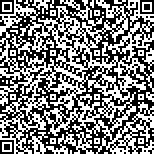下载中心
优秀审稿专家
优秀论文
相关链接
摘要

文中针对神舟四号飞船辐射计 (RAD)的在轨定标特点 ,提出一种替代外定标方案 ,即利用地球表面典型地物的微波辐射对RAD的不同通道重新进行定标。选取了全球大洋开阔海域的浮标、星载微波辐射计产品和小岛上气象探空数据 ,通过理论计算得出的亮温作为辐射计测量的低端。利用南美洲热带雨林亮温作为高端 ,重新给出了RAD定标方程。同时 ,为了确定定标的效果 ,分别与国外星载微波辐射计相同或相近通道的亮温进行了比较。另外还结合南海地面配合试验的测量结果对辐射计定标数据进行了分析。
The multi-channel microwave radiometer (RAD) on-aboard SZ-4 spacecraft, was launched at the end of 2002, the first space-borne microwave radiometer in China. Due to lack of in-orbit calibration, the measurements have to be quantatively evaluated before applications. In the paper, we put forward a vicarious external calibration method for solving the problem. The method is to re-calibrate all RAD channels using the two type of targets with known microwave radiation characteristics on the surface of the Earth. The first target was global open ocean. We collected synchro 252 sea surface truths with RAD from NDBC buoys combined with radiosonde profiles from nearby islands, as well as geophysical products of TMI (TRMM Microwave imager) ,including sea surface temperature, wind speed , water vapor contents, and liquid water contents. After calculation using our radiative transfer equation developed for RAD, we got a synchro oceanic parameter database for RAD brightness temperature calibration. The warm end we chose was Amazon Rain Forest. We obtained 8 profiles for two stations within 50 km from the RAD nearest overpasses. The brightness temperatures were derived from applying a simpled emissivity model and atmospheric absorption model. We compared the re-calibrated brightness temperatures of RAD with those from SSM/I within 0.5 degree of latitude and longtitude and within 2 hour of RAD overpasses above global open ocean. We found there exited a good consistency between those equivalent channales of RAD and SSM/I, i.e., 19.35GHz and 37.0 GHz. The correlation coefficient of the channales are 74.4% and 60.1% repectively for vertical and horizontal polarization of 19.35GHz. The poor correlation in 37GHz channels may contribute to the path differences of them since the incidence angles of RAD is 42.6 degree, while SSM/I 53.3 degree. We also compared brightness temperatures of RAD with measurements from a ground based microwave radiometer employed in the Nanhai experiment carried in February, 2003. The largest discrepancies also showed in those of 37GHz. In general, due to the insuitable location of ground test and poor sync time, and only few provable measurements for comparisons with the temperatures of RAD were made.

